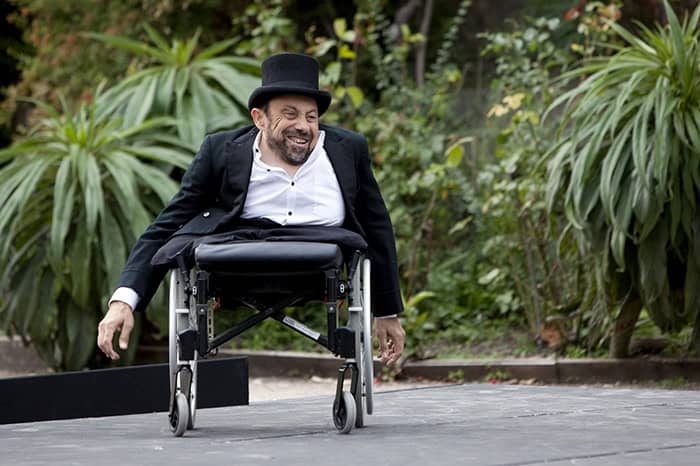The Death of Liam Scarlett
Posted: April 21st, 2021 | Author: Nicholas Minns | Filed under: Obituary | Tags: Bayerisches Staatsballett, Kasper Holten, Li Cunxin, Liam Scarlett, Queensland Ballet, Royal New Zealand Ballet, Sir Kenneth MacMillan, The Royal Ballet | Comments Off on The Death of Liam Scarlett
On April 17 it was announced that Liam Scarlett, former dancer and choreographer with the Royal Ballet, had died. He had just passed his 35th birthday. Almost exactly a year ago, on March 23rd, the Royal Ballet announced it would no longer be working with Scarlett, formerly artist-in-residence at Covent Garden, following his suspension from the company the previous August after a report emerged of ‘sexual misconduct with students’. The allegations against Scarlett went public in January in an article in The Times, after which the company announced that performances of his Symphonic Dances would not go ahead. Soon after, the Queensland Ballet, where Scarlett was an artistic associate, also severed ties with the choreographer, cancelling his planned production of Dangerous Liaisons. Both the Royal Ballet and Queensland ballet announced they had conducted independent investigations into the allegations of sexual misconduct. The Royal Ballet stated they had “found there were no matters to pursue in relation to alleged contact with students of the Royal Ballet School” and the director of Queensland Ballet, Li Cunxin, stated the company had found no evidence of improper behaviour by Scarlett in Australia.
So an acclaimed young choreographer’s reputation is publicly repudiated and his career wiped off international rosters despite statements that no evidence could be found to substantiate the claims against him. Then on the morning of April 16, the director of the Royal Theatre in Copenhagen, Kasper Holten (who had been director of the Royal Opera at Covent Garden from 2006 to 2011), issued a press release saying that Scarlett’s full-length Frankenstein, scheduled for May 2022, would not go ahead because of “information (that) has recently emerged about unacceptable behaviour from…Liam Scarlett towards several people among the Royal Theatre’s employees during rehearsals in 2018 and 2019.”
The coincidence of this announcement and Scarlett’s death the next day would seem to suggest that the fallout from his year-long public trial without jury had finally engulfed his spirit. While there is an incontrovertible argument against abuse, the loss of a life as a consequence does not square with it. Scarlett’s death is evidence of a penalty applied through the media rather than through the courts. Have the Royal Ballet, Queensland Ballet and Danish Theatre through their actions rooted out the cause of abuse or have they merely dealt with its effect? Scarlett trained at the Royal Ballet junior school, White Lodge, from the age of 8, graduating through the upper school into the main company at the age of 20. Was his behaviour an aberration or accepted practice? Over the twelve years of training, was he perhaps the product of an abusive culture?
A prestigious institution like the Royal Ballet and its parent, the Royal Opera House, is run by individuals, but it is in the nature of their power to withdraw behind an institutional mask in the event of danger and to publicly deflect any repercussions on to an exposed individual. Had there been previous instances of Scarlett’s behaviour (or anyone else’s) that had been brushed under the plush red carpet during his rise to fame (from which the company basked in reflected glory)? Was he a victim of the times, of the #MeToo campaign that must have made institutions like the Royal Ballet nervous of what lay hidden from public view?
In the first act of the ballet Romeo and Juliet, after the first scuffle between the rival families in Verona, the Duke enters and signals to the townspeople to step aside to reveal the dead. It is a powerful moment in Prokofiev’s score and in the choreography. The Duke brings the heads of the two warring families together to lay down their arms but the killing goes on in the next two acts until the two lovers take their own lives. In the Shakespeare play and in the original Bolshoi production, this final tragedy brings about a reconciliation between the two families. In Sir Kenneth MacMillan’s version for the Royal Ballet, that reconciliation is not shown on stage but is left in the hearts of the audience to sense. Liam Scarlett’s death is a tragedy, but if his death is to have any lasting legacy, a thorough reform of abusive culture wherever it may exist needs to take place.
While some companies have maintained Scarlett’s work in their repertoires — on Sunday, Bayerisches Staatsballett dedicated the première of its streamed program Paradigma to his memory and the Royal New Zealand Ballet has announced it is reviving his 2015 A Midsummer Night’s Dream this December — I question whether the Royal Opera House, Queensland Ballet and the Royal Danish Theatres have the moral compass to pass judgement on the choreographer by withdrawing his works from their stages. Those who handled the investigations into Scarlett’s alleged abuse and found “there were no matters to pursue” yet sacrificed him on the altar of public opinion should admit their craven error and resign before any meaningful restitution can begin.
